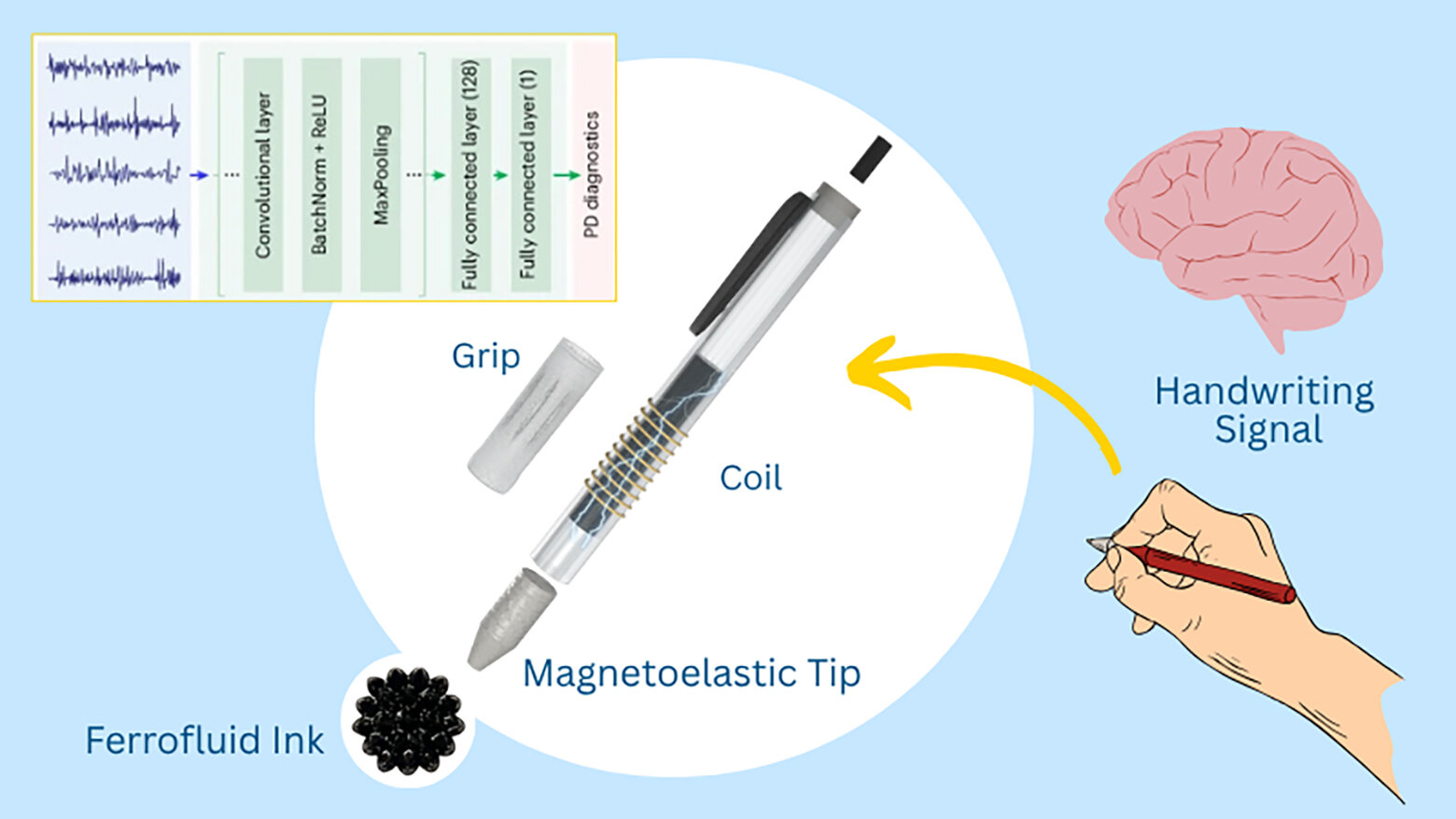
A Schematic showing the structure of the smart pen used to capture handwriting Signals for Parkinson’s Diagnostics. Credit: Jun Chen Lab/UCLA
Every year, tens of thirds of people with signs of parkinson’s disease go unnoticed until the incurable neurodegenerable condition has already condesed.
Motor Symptoms, Such as Tremors or Rigidity, Often Emerge only after sygnicant neurological damage has obccurred. By the time patients are diagnosed, more than half of their dopamine-production neurons may already be lost. This Kind of Diagnostic Delay Can Limit Treatment Options and Slow Progress on Early-Stage Interventions.
While there is existing tests to detect biomarkers of parkinson’s, including cell loss in the brain and inflammatory markers in blood, they typically requires to speck Major Medical Centers, which may be out of reach for many.
LED by Jun Chen, An Associate Professor of Bioengineering at the Ucla Samueli School of Engineering, Researchers have developed a seemingly Simple Yet Effective Tool: A SMART: A SILF-POWRED Magnetoelastic pen that could help detect early signs of parkinson’s by analyzing a person’s handwriting.
The highly sensitive diagnostic pen, described in a ucla-line study and published as a cover story in the June issue of Natural chemical engineeringFeatures a soft, silicon magnetoelastic tip and ferropluid ink – A special liquid containing tiny magnetic particles. When the pen’s tip is pressed against a Surface or Moved in the Air, The Pen Converts both on-Surface and in-irres Wrapped Around the pen’s barrel. Although not intended for writing, the pen is self-powerrated leveraaging changes in the magnetic properties of its tip and the dynamic flow of the ferropluid ink to generate data.
To test the pen’s diagnostic potential, the team conducted a pilot study with 16 participants, three of who has parkinson’s destination. The pen recorded Detailed Handwriting Signals, which was again analyzed by a neural network trained to detect motor patterns associateed with the disease. The model was removed to distinguish participants with parkinson’s from healthy individuals with an average accuracy of 96.22%.
“Detection of Subtle Motor Symptoms Unnoticeable to the Naked Eye is Critical for Early Internation in Parkinson’s Disease,” Said Chen, Who is the Study’s CORRESPONDING AUHHOR. “Our Diagnostic Pen Presents An Affordable, Reliable and Accessible tool that is Sensitive enough to pick up subtle movements and can be used Across Large Populations and Insource-Alimetated ARASURES.”
The reserchers anticipate that this pen could transform early Detection of Parkinson’s and other neurodegenerative conditions. Rather than waiting for symptoms to become disruptive, Primary Care Physicians or Geriatric Specialists Blad Administer a Quick Handwriting Test DURIT DURINT DURINT SHIS Referrals or treatment.
Wei wang, a professor who holds the leonard kleinrock term Chair in Computer Science, and Song Li, A Cancellor’s Professor in Bioengaining, Are also also authears on the paper. Other Authors Include Graduate Students Guorui Chen, Zhaoqi Duan, Kamryn Scott and Xun Zhao; Research Scientists Zeyang Liu; And postdoctoral scholars trinny tat and yihao zhou -ball members of chen’s bioelectronics Research Group. They were Joined by Graduate Student Junkai Zhang, Who is Advised by Wang. Chen is also a member of the california nanosystems institute at ucla.
More information:
Guorui Chen Et Al, Neural Network-Assisted Personalized Handwriting Analysis for Parkinson’s Disease Diagnostics, Nature chemical engineering (2025). Doi: 10.1038/s44286-025-00219-5
Citation: 3D-printed magnetoelastic Smart Pen May Help Diagnose Parkinson’s (2025, July 4) Retrieved 5 July 2025 from https://techxplore.com/news/2025-07-3d-magnetoelastic-smart- parkinson.html
This document is Subject to copyright. Apart from any Fair Dealing for the purpose of private study or research, no part may be reproduced without the written permission. The content is provided for information purposes only.



